Thank you for your patience as we rebuild our website! 2020-2025
This historical archive has a total of 7,073 entries.
Ichigo Campaign
The "Ichigo Campaign" or "Operation Ichi-Go" (一号作戦 Ichi-gō Sakusen, lit. "Operation Number One") was a sweep by Japanese forces through southern China April to December 1944, especially directed to eliminate American air bases. See more at https://en.wikipedia.org/wiki/Operation_Ichi-Go.
Pagination
- Previous page
- Page 7
- Next page
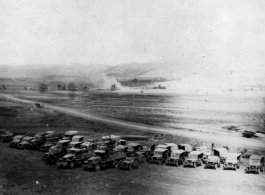
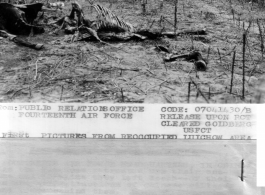
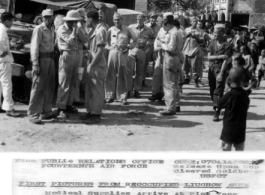
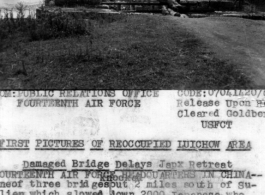
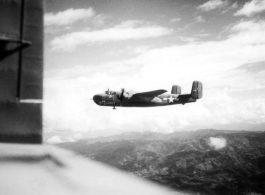
![Rubble and skeleton buildings--all that was left of most of Liuchow [Liuzhou] after heavy aerial bombing and artillery shelling during Japanese occupation."](/sites/default/files/styles/teaser/public/article/images/1199076793ObOmoO.jpg?itok=qHfEFp4s)
![This Chinese girl, near starvation, was found in Liuchow [Liuzhou] after the Japanese evacuated the town in their retreat up the Siang Corridor. She sits among damaged buildings awaiting the reentry of Chinese and allied forces.](/sites/default/files/styles/teaser/public/article/images/11990764842NubtD.jpg?itok=fqO-bVu3)
![Liuchow [Liuzhou] was the scene of hard fighting before the Japanese finally evacuated it. These three Chinese children make the best of their lot as reoccupation of the city goes forward.](/sites/default/files/styles/teaser/public/article/images/1199076212CeZz35.jpg?itok=tM3vy_ul)
![When the Japanese left Liuchow [Liuzhou], there was not much city for the civilians to come back to. This picture, made while the Japanese were still on the outskirts, shows the damage which the Japanese did to the town.](/sites/default/files/styles/teaser/public/article/images/1199076015dcbZ6V.jpg?itok=2BJBY5mF)
![After heavy fighting in the city of Liuchow [Liuzhou], from which the Japanese were driven, civilians return to their damaged city.](/sites/default/files/styles/teaser/public/article/images/11990758435l9DJ3.jpg?itok=comWbc1D)